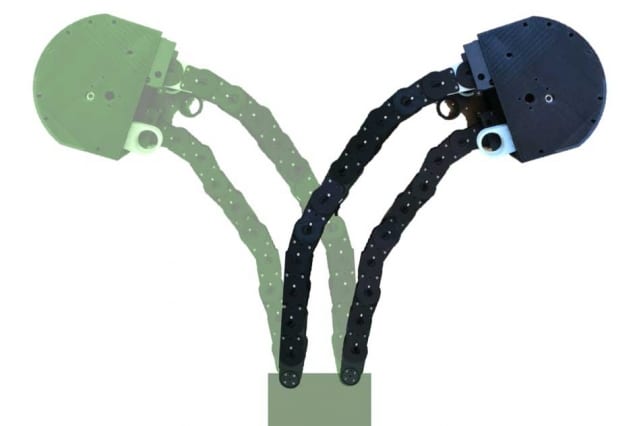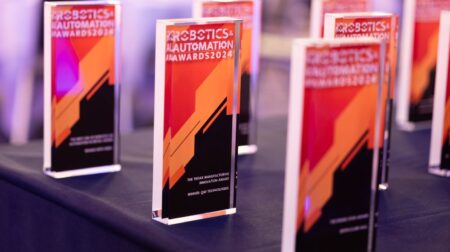MIT engineers have developed a robot designed to extend a chain-like appendage that’s flexible enough to twist and turn in any necessary configuration – similar to the way plants grow.
Its extendable appendage is rigid enough to support heavy loads or apply torque to assemble parts in tight spaces.
When a task is complete, the robot can retract the appendage and extend it again, at a different length and shape, to suit the next task.
The robot consists of a ‘growing point’, or gearbox, that pulls a loose chain of interlocking blocks into the box. Gears in the box then lock the chain units together and feed the chain out, unit by unit, as a rigid appendage.
According to MIT researchers, grippers, cameras and other sensors could be mounted onto the robot’s gearbox, allowing it to perform tasks such as meander through an aircraft’s propulsion system and tighten a loose screw, or to reach into a shelf and take a product without disrupting its surroundings.
The design of the robot is an offshoot of MIT professor of mechanical engineering Harry Asada’s work in addressing the ‘last one-foot problem’, which is an engineering term referring to the last step, or foot of a robot’s task or exploratory mission.
Engineers have designed varying concepts and prototypes to address the last one-foot problem, including robots made from soft, balloon-like materials that grow like vines to squeeze through narrow crevices.
However, Asada believes that such robots are not sturdy enough to support “end effectors” or add-ons such as grippers, cameras and other sensors that would be needed to carry out such a task.
“Our solution is not actually soft, but a clever use of rigid materials. The realisation of the robot is totally different from a real plant, but it exhibits the same kind of functionality, at a certain abstract level,” said Asada.
Tongxi Yan, a former graduate student in Asada’s lab, who led the work, added: “It can grow, retract, and grow again to a different shape, to adapt to its environment.”








